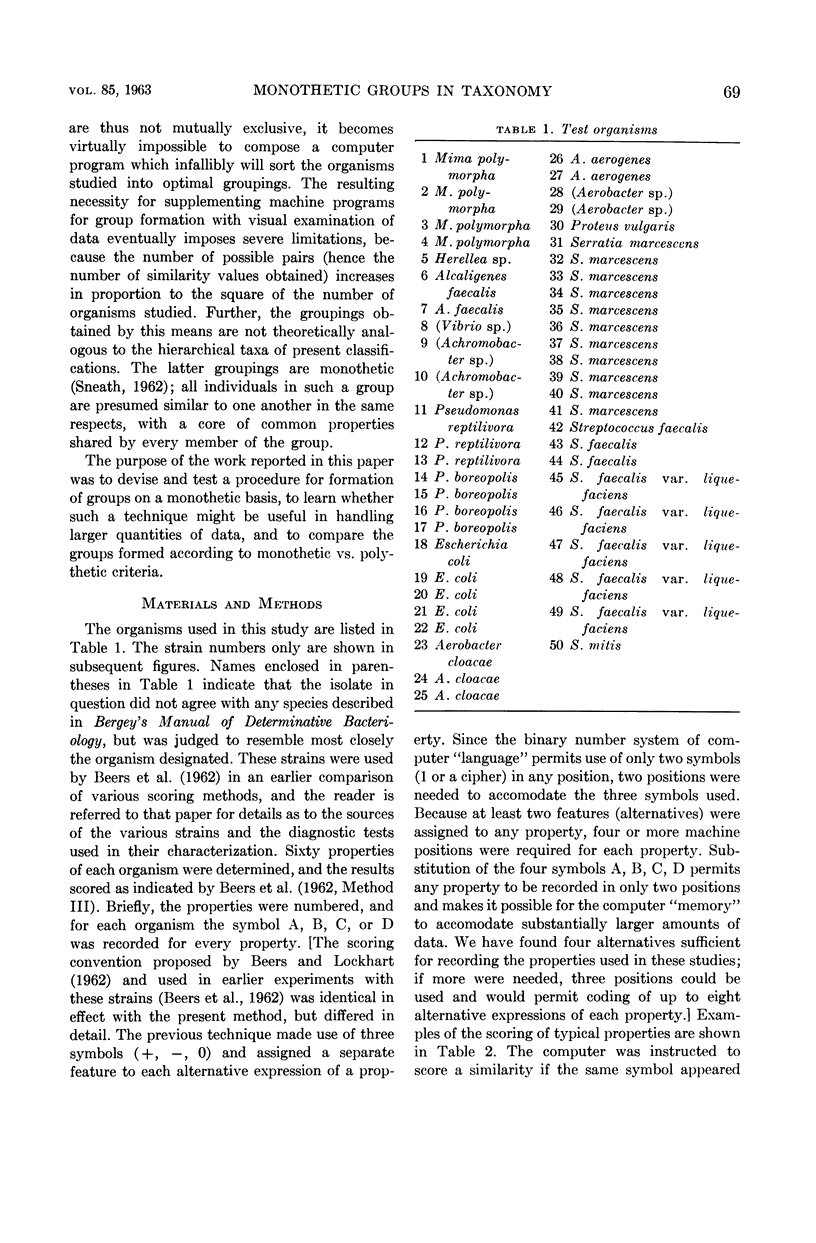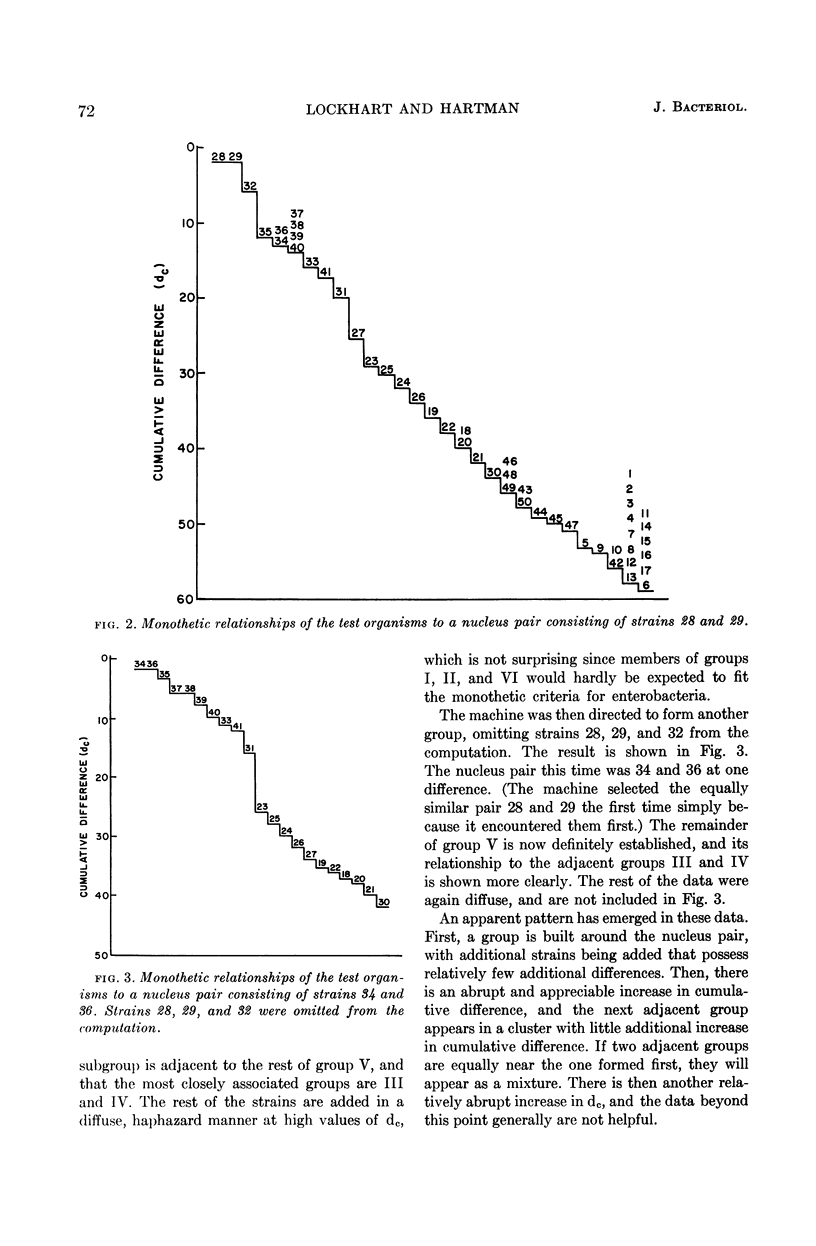Abstract
Lockhart, W. R. (Department of Bacteriology, Iowa State University, Ames) and P. A. Hartman. Formation of monothetic groups in quantitative bacterial taxonomy. J. Bacteriol. 85:68–77. 1963.—Previous applications of quantitative methods to bacterial classification have resulted in polythetic groupings in which no organism necessarily has all the features characteristic of its group, and no single property is necessarily possessed by every member of a group. Such classifications are not altogether analogous to present taxonomies, and (since the possible groups are not mutually exclusive) hence cannot be evaluated completely by computer methods. A technique is presented for formation of hierarchical monothetic groups in which the criterion for addition of each new member is the possession of an array of properties common to all organisms already in the group. These monothetic relationships among individuals are expressed in terms of cumulative difference, which is linearly related to the taxonomic distance (a function of similarity ratio) of polythetic classifications. Monothetic groupings obtained for 50 representative microorganisms were essentially similar to the polythetic groups evaluated by earlier methods. The necessary computation is suitable for analyzing relationships among large numbers of organisms.
Full text
PDF









Selected References
These references are in PubMed. This may not be the complete list of references from this article.
- BEERS R. J., FISHER J., MEGRAW S., LOCKHART W. R. A comparison of methods for computer taxonomy. J Gen Microbiol. 1962 Sep;28:641–652. doi: 10.1099/00221287-28-4-641. [DOI] [PubMed] [Google Scholar]
- BEERS R. J., LOCKHART W. R. Experimental methods in computer taxonomy. J Gen Microbiol. 1962 Sep;28:633–640. doi: 10.1099/00221287-28-4-633. [DOI] [PubMed] [Google Scholar]
- SNEATH P. H., SOKAL R. R. Numerical taxonomy. Nature. 1962 Mar 3;193:855–860. doi: 10.1038/193855a0. [DOI] [PubMed] [Google Scholar]


